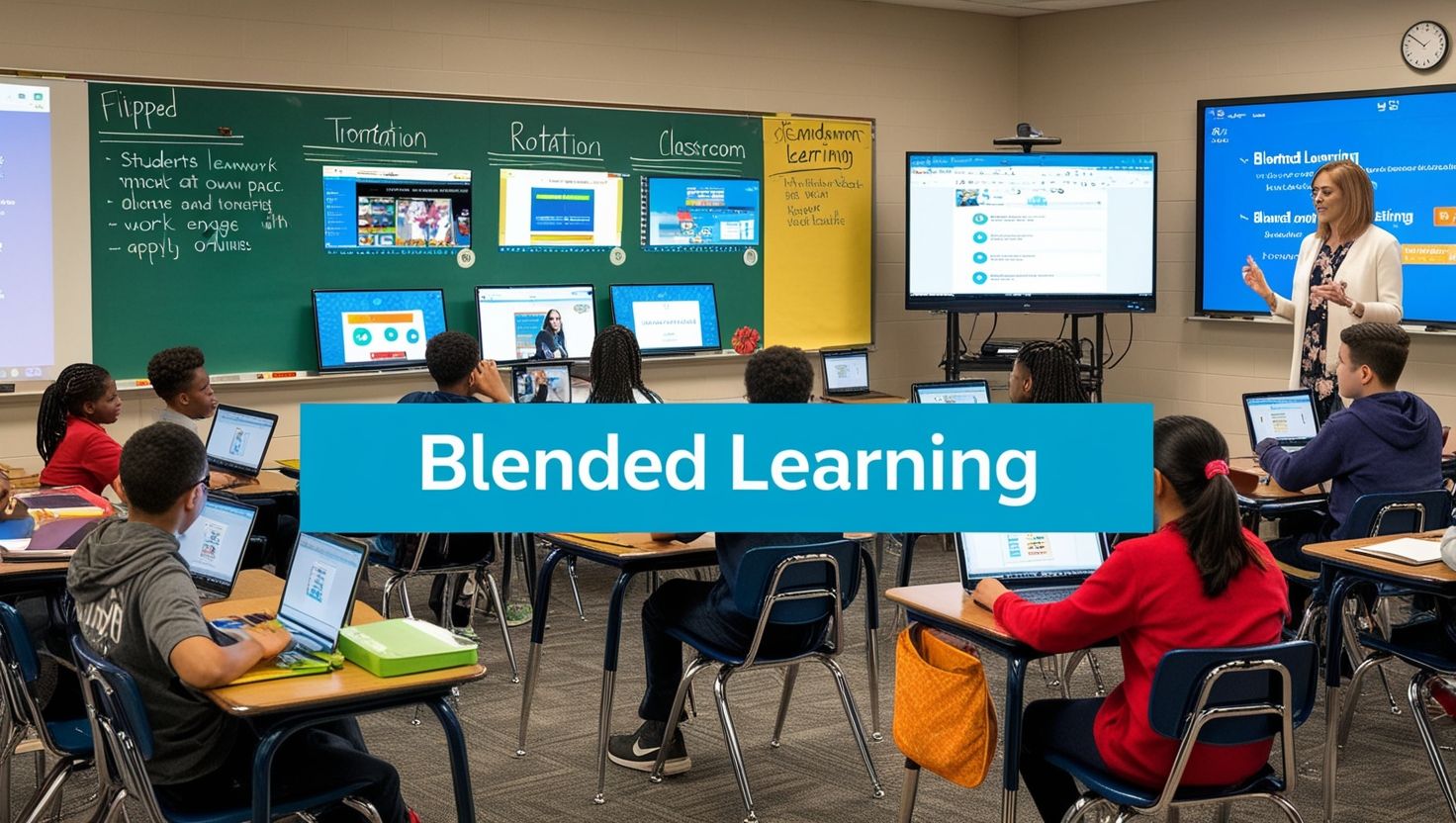Blended Learning at School, Blended learning has become a pivotal approach in modern education, integrating the strengths of both traditional classroom instruction and digital learning. This model combines in-person teaching with online educational resources, offering students more flexible and personalized learning experiences. In schools, blended learning is transforming how educators approach teaching and how students engage with learning materials, with various benefits and challenges emerging from its adoption.
What is Blended Learning?
Blended learning is a hybrid teaching method that blends face-to-face instruction with online activities. The online component can involve various digital tools, such as virtual labs, educational videos, quizzes, and discussion forums. In this model, students can engage with learning materials at their own pace, while still receiving the guidance and support of a teacher during in-person sessions. This flexible format allows for a more dynamic interaction between students and teachers, encouraging deeper learning and self-management skills.
There are several common models of blended learning in schools:
- Rotation Model: Students rotate between different learning modalities, such as online instruction, small group discussions, and traditional classroom activities.
- Flex Model: The majority of instruction is delivered online, with teachers available for support when needed.
- Flipped Classroom: Students first encounter new content online, usually as homework, and classroom time is devoted to applying the material through problem-solving, discussions, or projects.
- A La Carte Model: Students take some courses entirely online, while others are conducted in a traditional classroom setting.
Benefits of Blended Learning
- Personalized Learning: One of the most significant advantages of blended learning is its ability to cater to individual learning needs. Digital tools can adapt to a student’s performance, offering additional resources or adjusted content to challenge or support them as needed
- Flexibility and Autonomy: Blended learning allows students to learn at their own pace. They can revisit challenging materials, complete assignments at flexible times, and engage with content when they are most ready to learn
- Enhanced Engagement: The integration of multimedia resources such as videos, interactive simulations, and gamified learning modules helps to increase student engagement. This is particularly beneficial for visual and auditory learners who may struggle with traditional lecture-based teaching
- Collaboration and Communication: Online platforms allow for increased collaboration, enabling students to engage with each other and the teacher even outside of classroom hours. Discussion forums, group projects, and shared digital spaces foster greater communication
Challenges of Blended Learning
- Access to Technology: One of the primary challenges in implementing blended learning is ensuring all students have access to the necessary technology and internet connectivity. Schools must address the digital divide to make blended learning equitable for all students
- Teacher Training: Not all educators are familiar with the digital tools required for blended learning. Teachers need proper training in managing both in-person and online components effectively
- Student Accountability: In a blended learning environment, students are expected to take more responsibility for their own learning. This can be challenging for students who lack self-motivation or time management skills
- Balancing In-Person and Online Learning: Striking the right balance between online and face-to-face instruction is crucial. Too much reliance on digital tools can lead to decreased interaction between students and teachers, while too much classroom time might negate the flexibility benefits of the blended model
Examples of Blended Learning in Action
Schools across the globe are incorporating blended learning into their curriculum with varying degrees of success. For example, some schools use the flipped classroom model in subjects like science and math, where students watch instructional videos at home and engage in hands-on experiments or problem-solving during class. Other schools have adopted the rotation model, where students alternate between learning in small groups, engaging with adaptive online learning platforms, and receiving direct instruction from teachers.
Moreover, during the COVID-19 pandemic, many schools were forced to adopt a blended learning approach to continue education during lockdowns. This experience highlighted the potential for blended learning to provide continuity in education during unforeseen disruptions.
Future of Blended Learning in Schools
As educational technology evolves, blended learning is likely to become more prevalent in schools worldwide. Innovations in artificial intelligence (AI), augmented reality (AR), and virtual reality (VR) will offer even more personalized and immersive learning experiences
Furthermore, as schools become more adept at using these tools, the lines between online and offline education will continue to blur, creating more holistic and engaging learning environments for students.
Conclusion
Blended learning offers a promising pathway for schools to modernize their approach to education. By combining the strengths of both traditional and digital learning methods, blended learning can provide personalized, flexible, and engaging educational experiences. However, to fully harness its potential, schools must address challenges related to technology access, teacher training, and student accountability. As technology continues to evolve, so too will the opportunities for blended learning to reshape education.
References:
- Synthesia. (2024). “11 Most Important Education Trends for 2024 and Beyond.”
- eSchool News. (2024). “5 of the biggest education trends in 2024.”
- Google Blog. (2024). “New education features to help teachers save time and support students.”
- Mien Company. (2024). “Accessibility and equity in education.”

6 thoughts on “Blended Learning at School”
Comments are closed.